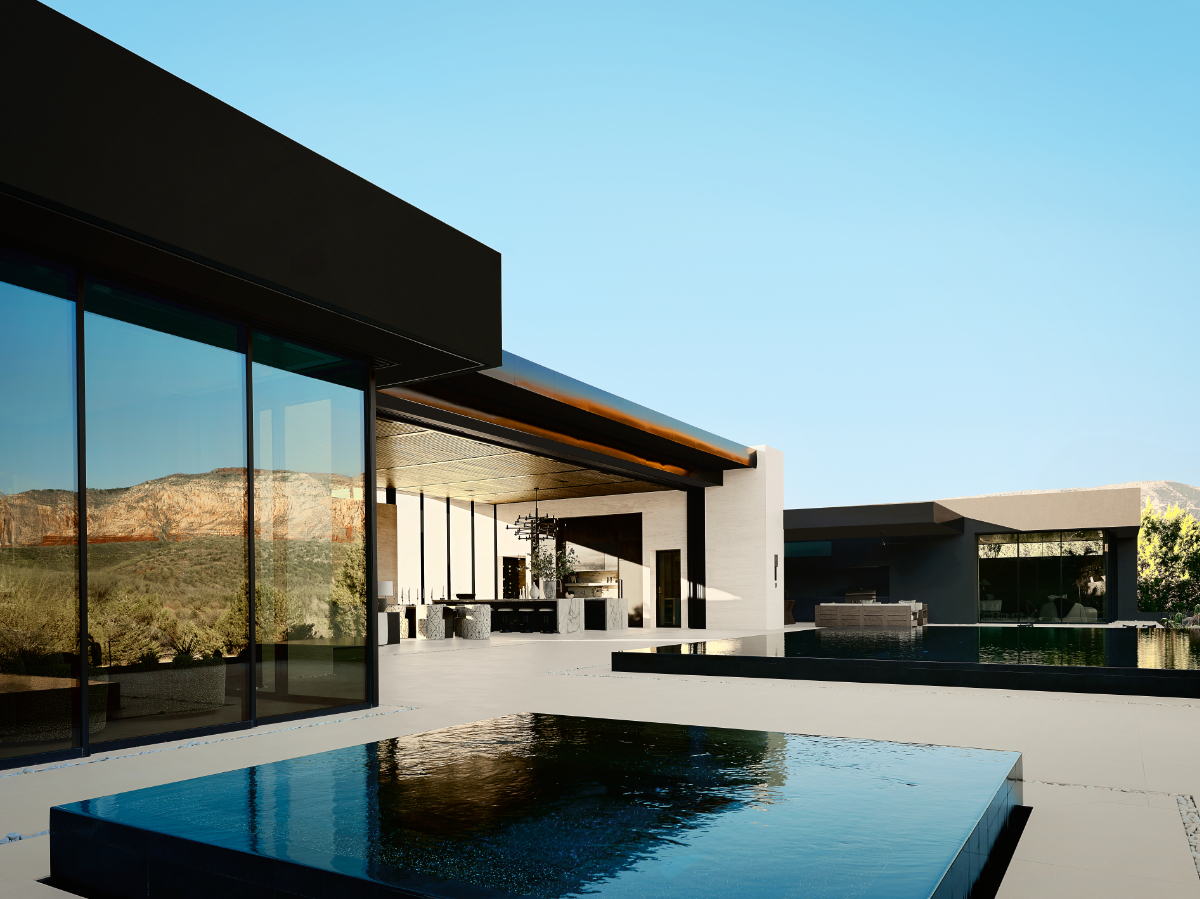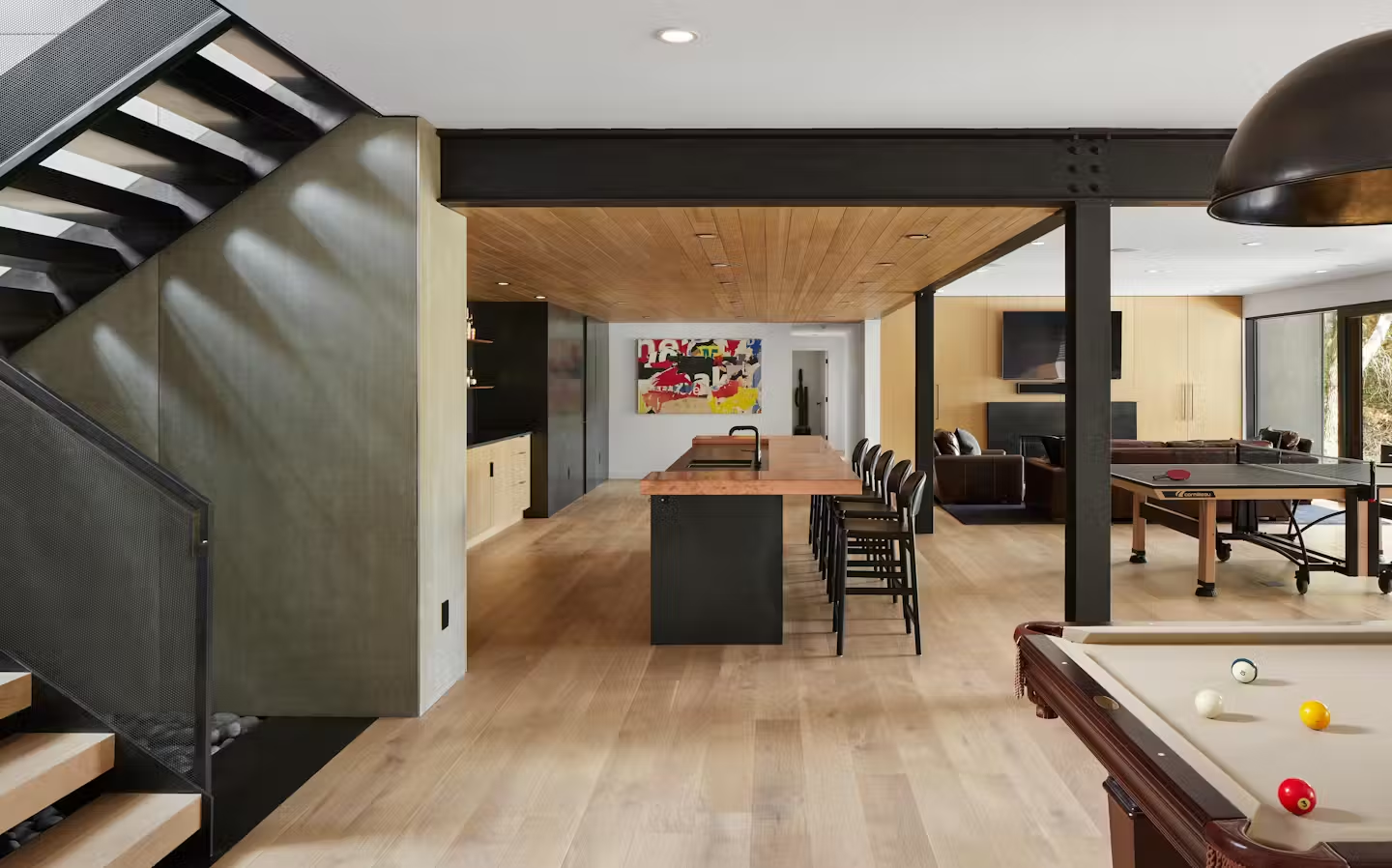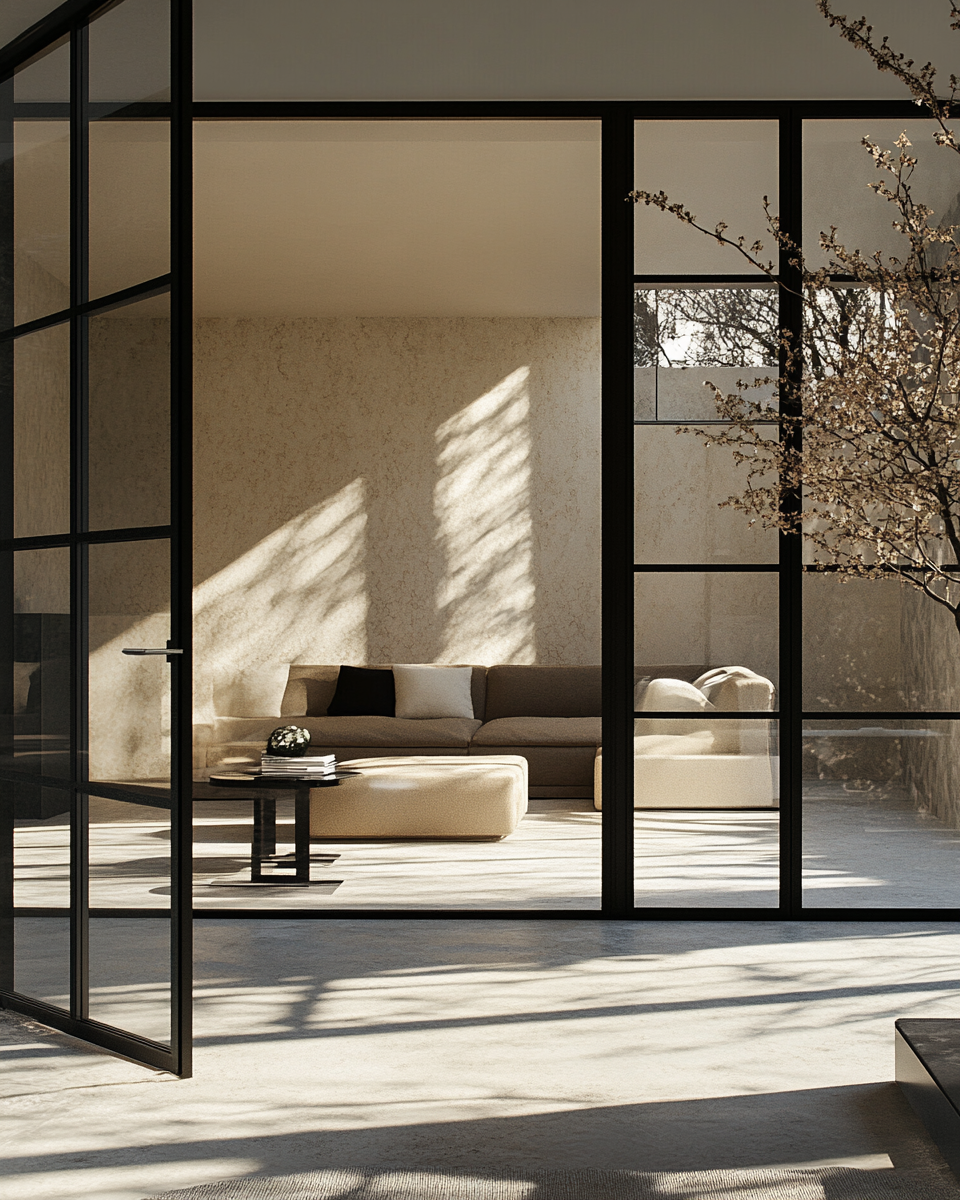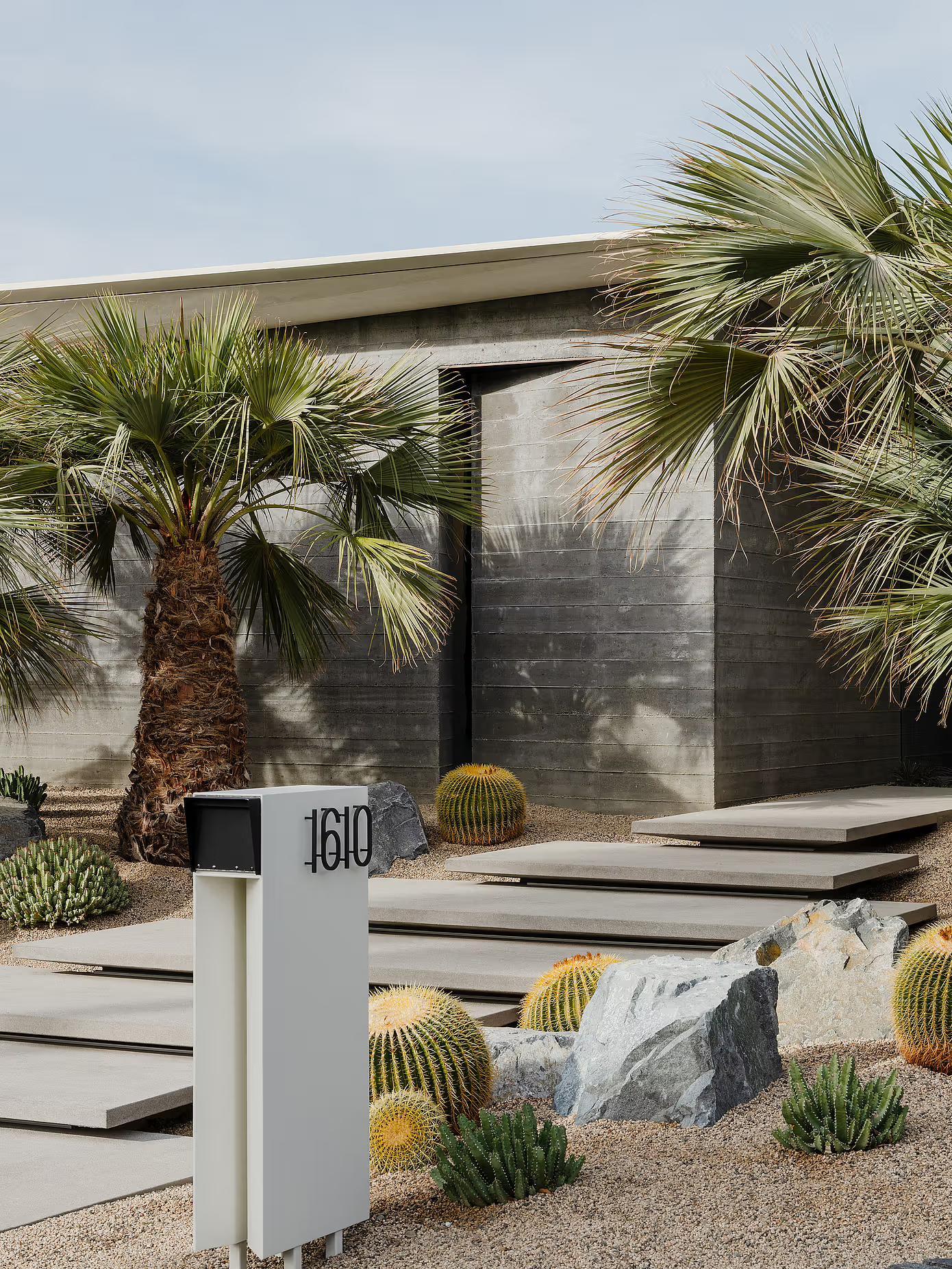
Natural Materials, Modern Lines
Why limestone, timber, and glass work beautifully in desert architecture.
In the desert, beauty is not added—it’s revealed. The terrain already offers a palette of sun-baked tones, shifting light, and textures carved by centuries of wind and weather. In this context, the use of limestone, timber, and glass is not just a design choice, it’s a dialogue with the land.
Limestone, with its pale warmth, reflects and absorbs the desert sun in equal measure. It feels timeless, grounding a home in a material that ages gracefully, its surface quietly recording the passage of seasons. Timber, when used with restraint, softens the sharp precision of modern lines. Its organic grain and warmth introduce a human scale to spaces that might otherwise feel austere, filtering light and casting shadows that move gently with the day.
Glass, meanwhile, becomes more than a window—it’s a frame for the ever-changing desert. Expansive panes dissolve boundaries, allowing light, horizon, and sky to enter as part of the architecture. Paired with slender, refined framing, glass invites the outdoors in without competing with it, turning the surrounding landscape into an integral design element.
The beauty lies in the balance: modern geometry anchored in raw, enduring materials. Together, limestone, timber, and glass embody a principle central to great desert architecture—respect the land, enhance the light, and let the view speak for itself. The result is a home that feels inevitable in its place, as if it could not exist anywhere else.



